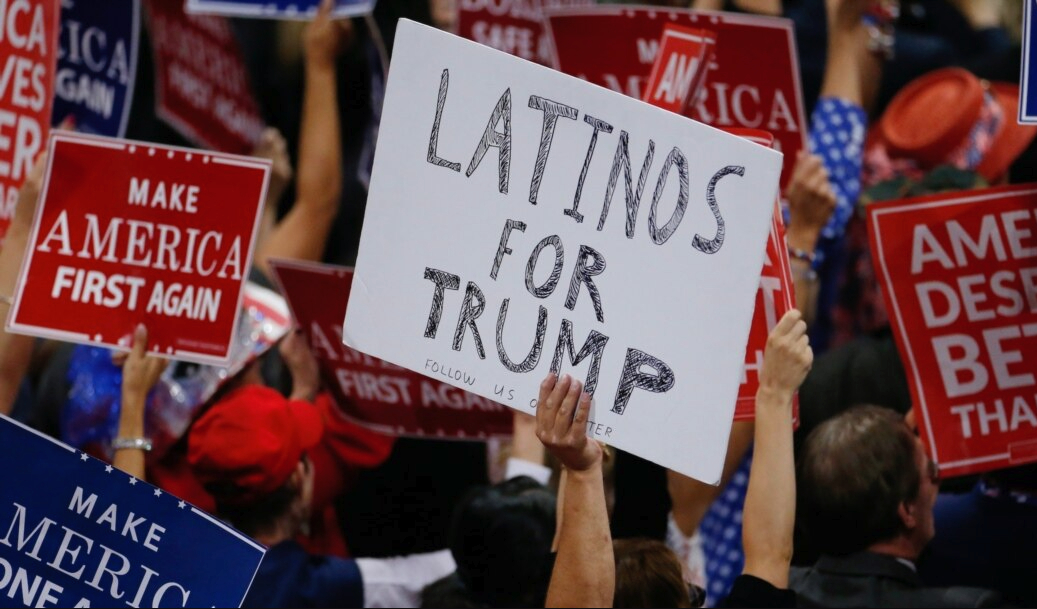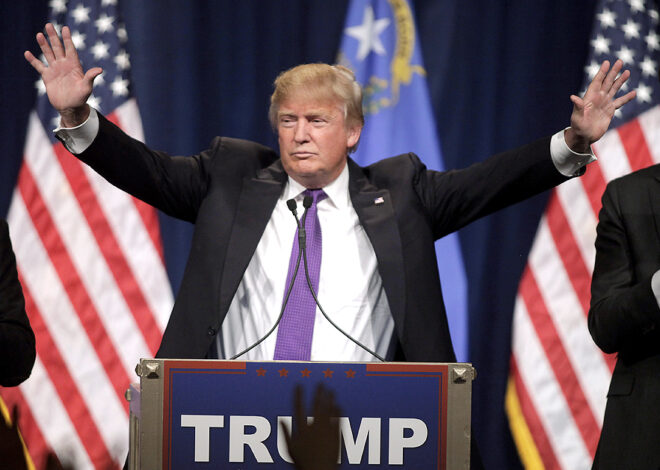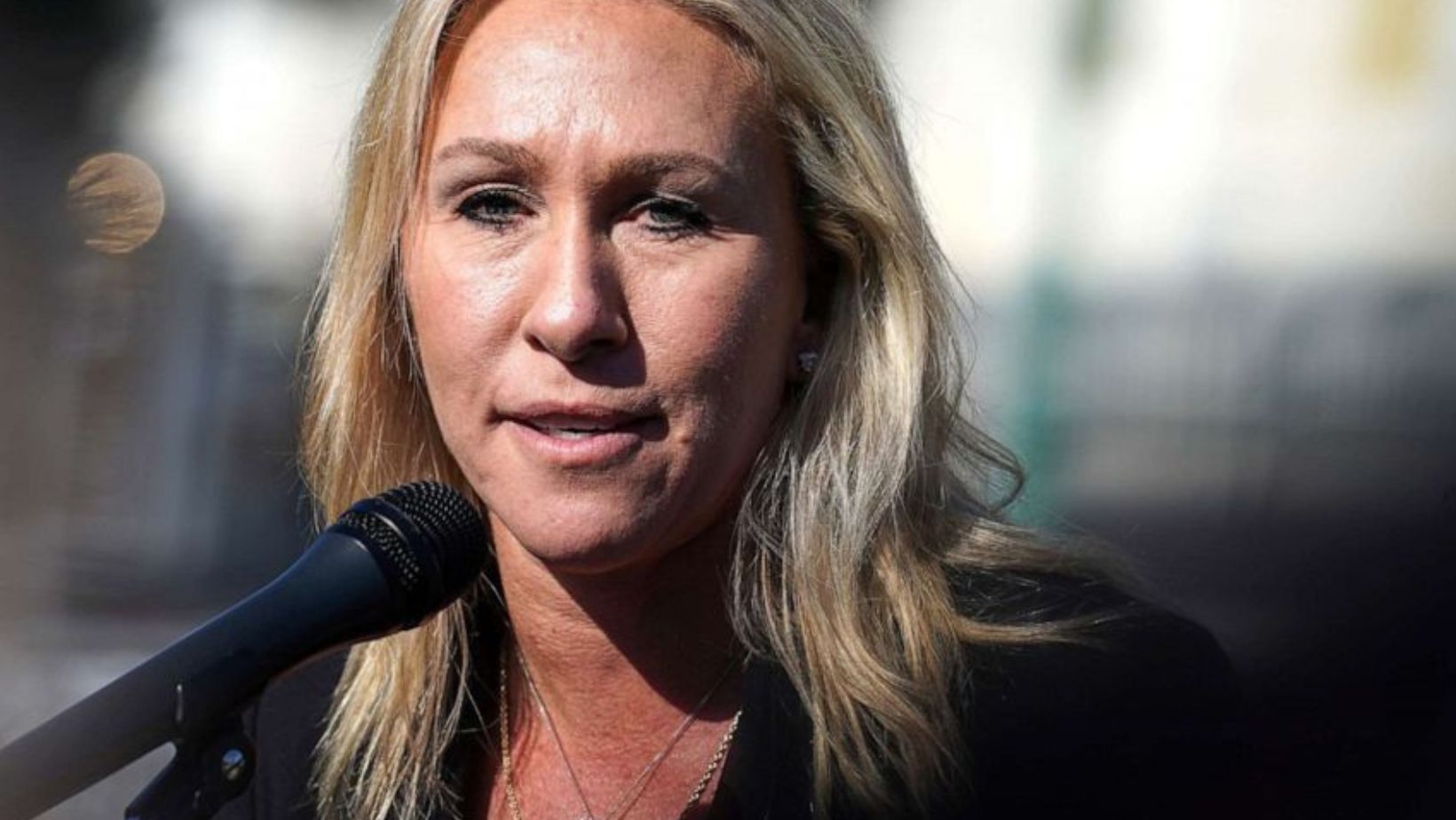
How important was the Latino voters for Donald Trump’s victory in the 2024 presidential election?
In the 2024 presidential election, Donald Trump made historic inroads with Latino voters, which proved essential to his victory. Trump secured around 42% of the Latino vote—up significantly from previous elections—surpassing even George W. Bush’s high-water mark for Latino support among Republicans. Although Kamala Harris won a majority of Latino votes (approximately 56%), the reduced margin allowed Trump to gain traction in key battleground states, such as Texas and Florida, where he won considerable support in Latino-dense counties along the southern border and in South Florida. Trump’s gains among Latino men, whom he won outright, along with increased support from Latino voters without college degrees, were crucial factors.
Several key issues aligned with Trump’s appeal to the Latino community. Latino Trump supporters prioritized the economy, immigration, and crime, which mirrored national Republican priorities. For example, 93% of Latino Trump voters saw the economy as a major concern, compared to 80% among Latino Harris supporters. This focus on economic issues, along with Trump’s engagement on topics like crime and border security, helped him connect with traditionally conservative Latino values, particularly among working-class and religious Latino voters.
Trump’s ability to resonate with Latino voters on cultural and economic concerns, as well as his messaging against socialism—a term that has negative connotations among many Latinos due to political histories in Latin American countries—allowed him to build rapport in ways previous Republican candidates hadn’t. His approach, contrasting with Democratic language that some Latino voters found alienating, likely shifted the Latino electorate’s views on the GOP, impacting the election’s outcome substantially.
In addition to economic and cultural factors, the Latino vote for Trump in 2024 was influenced by his direct engagement with Latino communities and his emphasis on relatable messaging. Trump held numerous events targeting Latino voters, including a town hall on Univision and a high-profile visit to the Cuban-American hub Versailles in Miami. His outreach emphasized respect for Latino values and acknowledged concerns about socialism—a significant topic for Latinos with family histories in socialist-leaning countries like Cuba and Venezuela. This focus helped Trump gain ground in communities that may feel overlooked by traditional Democratic messaging, especially those wary of “progressive” labels that they associate with leftist ideologies from Latin America.
Trump’s approach capitalized on the Democratic Party’s internal struggles to connect effectively with Latinos. While Kamala Harris’ campaign attempted to address Latino concerns—running ads on issues like healthcare and crime—her messaging reportedly fell short. Critics within the Democratic Party argue that the campaign’s stance on issues like “Latinx” terminology and progressive policies alienated some Latino voters. Surveys indicate that only a small fraction of Latinos identify with the term “Latinx,” and its usage has sparked backlash. Additionally, Harris’ alignment with progressive ideals clashed with the values of more conservative-leaning Latino voters, many of whom prioritize traditional family structures, economic self-sufficiency, and a firm stance on crime and border security.
In swing states with large Latino populations—particularly Florida, Texas, and parts of the Southwest—Trump’s increased Latino support helped cement his victories. For instance, in Florida, where he has consistently won support from Cuban-Americans and Venezuelan-Americans, Trump’s stance on issues like socialism and his personal outreach in Spanish-speaking media connected deeply with these communities, contributing to his overall success. This evolving relationship with the Latino electorate underscores the importance of nuanced engagement and respect for the diverse perspectives within this voting bloc.
In sum, Trump’s 2024 performance with Latino voters highlights the potential for shifting alliances in American politics. It also suggests that Latino voters, a growing demographic, will continue to play a pivotal role in determining the outcomes of U.S. elections, especially in regions where their votes can decide the fate of the Electoral College.
What do Latino voters really think about Donald Trump’s policies?
The results of the 2024 election reveal a shift in how Latino voters perceive the two major parties, suggesting that Latino voters are increasingly evaluating candidates based on specific issues rather than party loyalty. Trump’s gains with this demographic signal that Latinos are prioritizing economic stability, personal safety, and practical solutions to immigration over traditional party lines. This pivot challenges the long-held notion that demographic trends inherently favor Democrats, underscoring that candidates must actively engage Latino communities on the issues that matter most to them.
Furthermore, Trump’s outreach tapped into generational and educational divides within the Latino community. While Harris maintained the majority of support among younger, college-educated, and urban Latino voters, Trump resonated strongly with older, rural, and working-class Latinos who often feel more economically vulnerable. These voters saw Trump’s policies as aligned with their own values on family, work, and personal security, areas they felt Democrats had overlooked. Such nuanced dynamics highlight that the Latino community is far from monolithic, and successful candidates need to adopt a diverse approach that considers regional, cultural, and socioeconomic differences within Latino populations.
Trump’s success in expanding his Latino support also reflects broader trends in American politics, where both major parties must now recognize the importance of the Latino vote as a decisive force. The 2024 election has thus set the stage for further engagement with Latino voters across the political spectrum, particularly as both parties seek to understand and address the diverse needs of this influential community going forward.
As the 2024 election results demonstrate, the Latino vote has become increasingly influential in shaping the political landscape, especially in key battleground states. While the Latino community is diverse, with varying concerns based on factors such as national origin, education level, and generational differences, Trump’s ability to attract a significant portion of the Latino electorate highlights a growing shift in political dynamics. This change has far-reaching implications for both parties.
Trump’s focus on economic issues, law and order, and his stance on immigration resonated with many Latino voters, particularly those in Florida, Texas, and other states with large Latino populations. For instance, Trump’s rhetoric and policies, which emphasized the dangers of socialism and framed him as a defender of family values, strongly appealed to conservative-leaning Latino voters, especially those with ties to countries like Cuba and Venezuela. These communities are often wary of left-wing ideologies, making Trump’s messaging effective in winning over their support.
In addition, Trump’s direct outreach to Latino communities, such as town halls in Spanish and events in culturally significant places like Little Havana in Miami, helped him maintain a personal connection with voters. His approach contrasted with the Democrats, who, while attempting to engage Latino voters, faced criticism for not addressing their concerns effectively. The use of terms like “Latinx” and a heavy focus on progressive policies alienated certain segments of the Latino community who felt that their more conservative values and economic concerns were not adequately addressed.
Overall, the 2024 election marked a significant turning point in Latino political engagement, with Trump successfully consolidating support among a broad spectrum of this demographic. This shift suggests that both parties will need to rethink their strategies for appealing to Latino voters in future elections. As the Latino population continues to grow, its political impact will only increase, making it a crucial factor in shaping the outcomes of American elections for years to come.
How much does Donald Trump’s immigration policy harm Latinos?
The long-term impact of Donald Trump’s immigration policies on Latinos can be seen in multiple facets of their experience in the United States, continuing to influence both their socio-economic standing and their political behavior. While his immigration stance motivated some Latinos to align with his party, particularly those who prioritize issues like border security, it also contributed to significant harm for many others.
- Family and Community Disintegration: One of the most prominent and damaging aspects of Trump’s immigration policies was the separation of families. The “zero-tolerance” policy, which led to thousands of children being separated from their parents at the U.S.-Mexico border, was widely condemned. This policy affected countless Latino families, leaving lasting trauma that extended far beyond those directly involved. Studies have shown that this kind of family disruption has long-term psychological impacts, especially on children, and contributed to a climate of fear in Latino communities. The fear of family separation has driven many immigrants to live in the shadows, unwilling to engage with authorities or seek help when needed.
- Economic Consequences: Trump’s policies also created economic uncertainty for Latino communities, particularly for immigrant workers. The president’s attempts to restrict legal immigration through programs like the “public charge” rule, which penalized immigrants for using public benefits, disproportionately affected Latino families. This policy, which made it more difficult for those in need of assistance to gain permanent residency, created additional financial burdens for working-class immigrants, many of whom were employed in low-wage, essential jobs that are vital to the U.S. economy. This increased strain led to greater economic instability within Latino communities, as many faced job insecurity, limited access to healthcare, and a lack of affordable housing.
- Social and Political Polarization: Trump’s rhetoric surrounding immigration also heightened societal divisions. His characterization of immigrants as criminals and threats to national security reinforced stereotypes and led to a rise in anti-Latino sentiment. This climate of hostility was reflected in higher rates of hate crimes against Latinos, which spiked during his tenure. For many Latinos, Trump’s language and policies felt like an attack on their identity, contributing to a sense of alienation and distrust in the political system.
- Latino Voter Engagement and Political Shifts: Trump’s immigration policies also had a profound effect on Latino political behavior. On one hand, his hardline stance on immigration energized a portion of conservative-leaning Latinos who aligned with his vision of law and order. However, his policies alienated many others, especially younger, more progressive Latinos who viewed his stance as harmful to their communities. This divide has created a more politically fragmented Latino electorate, with some turning away from the Republican Party due to concerns over the treatment of immigrants. As a result, Latino voters became a key demographic in the 2020 and 2024 elections, with both parties attempting to shift their strategies to appeal to this influential group.
In conclusion, while some Latinos may have supported Trump’s immigration policies due to concerns about national security or economic factors, the broader impacts on the Latino community—ranging from family separation to economic hardship and social division—were undeniably harmful. These policies not only affected those directly targeted but also contributed to a wider climate of fear, discrimination, and polarization that will continue to shape the Latino experience in the United States for years to come.


